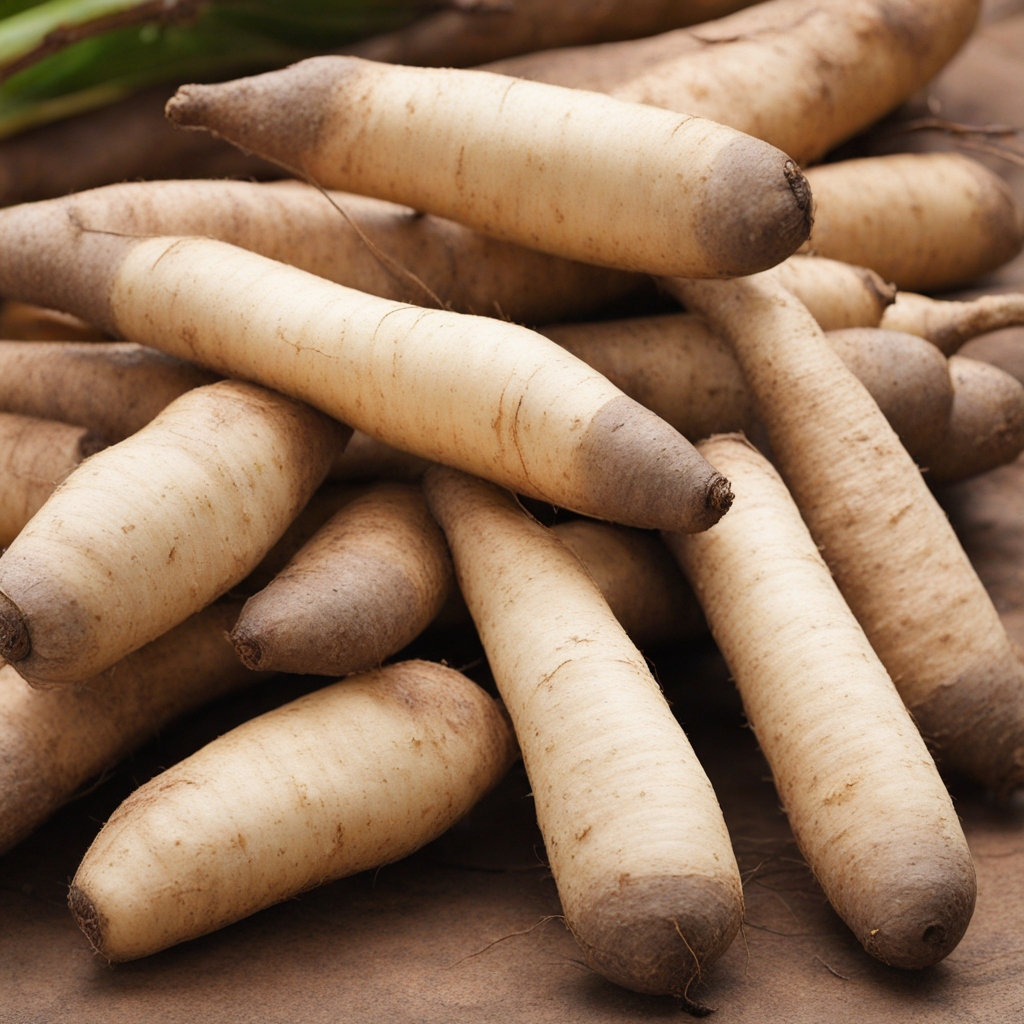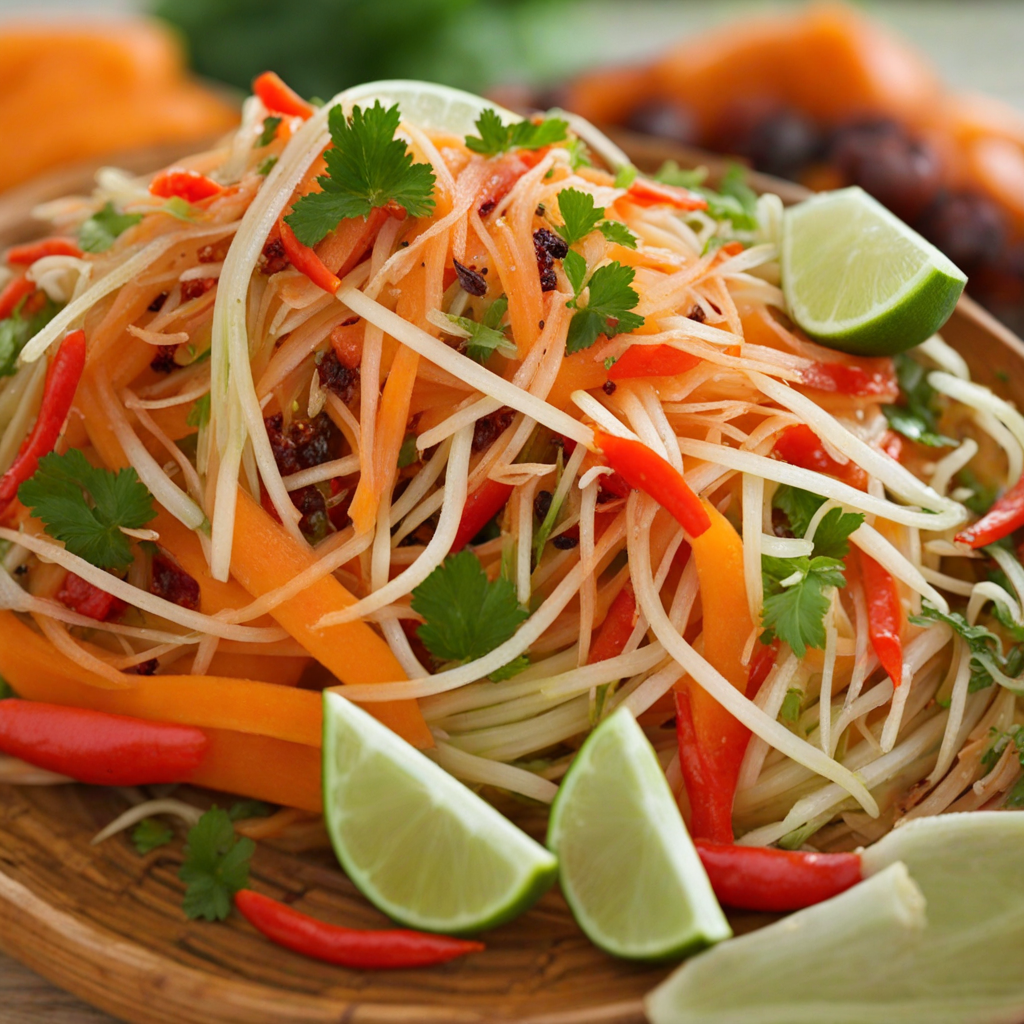Fish Soup
Fish soup from Papua New Guinea is a vibrant and aromatic dish that highlights the rich biodiversity of the region’s waters. The base of the soup is typically made from fresh, locally sourced fish, often caught the same day, which lends an unparalleled freshness to the dish. The fish is usually simmered in a broth infused with a medley of spices and herbs, including lemongrass, ginger, and garlic, creating a fragrant and flavorful foundation. This soup often features a variety of fish, from snapper to barramundi, each contributing its unique texture and taste to the final dish. The addition of vegetables such as taro, sweet potatoes, and local greens enhances the soup's heartiness while also providing a colorful presentation. These ingredients not only complement the fish but also absorb the flavors of the broth, creating a harmonious blend of tastes with every spoonful. Coconut milk is sometimes added, enriching the soup with a creamy texture and a subtle sweetness that balances the savory elements beautifully. The resulting dish is both nourishing and comforting, making it a staple in many coastal communities across Papua New Guinea. Serving fish soup is often a communal experience, reflecting the cultural significance of sharing food in Papua New Guinea. It is typically enjoyed with a side of freshly baked bread or traditional sago, allowing diners to soak up the flavorful broth. Each bowl offers a unique taste of the sea, intertwined with the essence of the land, and provides an opportunity to experience the local culinary traditions that have been passed down through generations. The freshness of the ingredients, combined with the traditional cooking methods, makes fish soup not just a meal, but a celebration of the rich flavors and heritage of Papua New Guinea.
How It Became This Dish
The Rich History of Fis Sup: A Culinary Gem from Papua New Guinea #### Origins and Ingredients Fis Sup, a beloved traditional dish from Papua New Guinea (PNG), epitomizes the rich tapestry of the nation’s diverse cultures and culinary practices. At its core, Fis Sup is a fish soup that reflects the geographical bounty of the country, characterized by an abundance of freshwater and saltwater fish, tropical vegetables, and aromatic herbs. The dish is often made with local fish, such as barramundi or mudfish, combined with a medley of vegetables like sweet potatoes, taro, and leafy greens, all simmered together in a flavorful broth. The origins of Fis Sup can be traced back to the indigenous fishing communities of PNG, who have relied on fishing as both a sustenance and a cultural practice for thousands of years. The waters surrounding PNG are teeming with marine life, and the people have developed intricate fishing techniques, including the use of nets and traps, passed down through generations. The use of local ingredients, such as coconut milk and native spices, showcases the resourcefulness and creativity of the PNG people in utilizing their natural environment. #### Cultural Significance Fis Sup is not merely a dish; it is a significant cultural artifact that represents the communal values of Papua New Guinean society. Food in PNG is deeply intertwined with social practices and rituals. Fis Sup is often prepared for gatherings, celebrations, and important cultural events. It serves as a symbol of hospitality, where sharing a meal signifies community bonds and solidarity among families and friends. In many Papua New Guinean cultures, the act of cooking and sharing food is imbued with spiritual significance. Traditional beliefs often ascribe a connection between the preparation of food and the land, sea, and ancestors. Fis Sup, prepared with care and reverence for the ingredients, embodies this connection, as it honors both the natural environment and the cultural heritage of the people. #### Cooking Techniques and Variations The preparation of Fis Sup varies across the different regions of Papua New Guinea, reflecting the diverse ethnic groups and their unique culinary traditions. Cooking methods can include boiling, steaming, or simmering, and the choice of fish and vegetables may differ based on local availability. In coastal regions, for instance, Fis Sup may incorporate saltwater fish and include ingredients like seaweed or shellfish, while inland communities may favor freshwater fish and root vegetables. One of the most distinctive aspects of Fis Sup is its adaptability. Families often customize the soup according to personal preferences or seasonal availability of ingredients, making each version unique. Some may add spices like ginger and chili for heat, while others might incorporate herbs such as pandan leaves for aromatic depth. This flexibility not only highlights the culinary creativity of PNG but also reflects the importance of sustainability and local sourcing in the cooking process. #### Development Over Time As globalization has influenced culinary practices worldwide, Fis Sup has also evolved. While maintaining its traditional roots, the dish has seen new interpretations and adaptations. In urban areas, where ingredients may be less accessible, chefs and home cooks have begun to incorporate more commercially available fish and vegetables, blending traditional recipes with modern cooking techniques. The rise of tourism in Papua New Guinea has also played a role in the development of Fis Sup. As more visitors flock to the country, there is an increased interest in authentic Papua New Guinean cuisine. Restaurants and culinary festivals have emerged, showcasing Fis Sup and other traditional dishes, allowing local chefs to experiment while still honoring age-old traditions. This exposure has not only elevated the profile of Fis Sup but has also encouraged a resurgence of interest in indigenous cooking practices among younger generations. #### Modern Interpretations and Global Influence In contemporary culinary circles, Fis Sup has garnered attention as part of the broader movement toward recognizing and celebrating indigenous cuisines. Chefs who focus on sustainability and farm-to-table concepts often look to traditional dishes like Fis Sup for inspiration, as they emphasize the use of local, seasonal ingredients and traditional preparation methods. In urban settings, fusion cuisine has emerged, where Fis Sup may be reimagined with influences from other culinary traditions. For example, some chefs have experimented with adding Asian flavors, such as lemongrass or miso, resulting in a unique hybrid dish that retains the essence of Fis Sup while appealing to a broader audience. This blending of flavors speaks to the dynamic nature of food culture in a globalized world, where traditional dishes are continually reinterpreted. #### Conclusion Fis Sup is more than just a dish; it is a vibrant representation of the cultural identity and historical legacy of Papua New Guinea. Rooted in the practices of indigenous fishing communities, it embodies the principles of sustainability, community, and respect for the environment. As it adapts to changing times and influences, Fis Sup remains a testament to the resilience of PNG’s culinary heritage. In a world where the significance of food often extends beyond mere nourishment, Fis Sup serves as a delicious reminder of the stories and traditions that shape our culinary landscapes. Whether enjoyed in a traditional setting or as part of a modern culinary experience, Fis Sup continues to bring people together, transcending borders and generations, and inviting all to savor the rich flavors of Papua New Guinea.
You may like
Discover local flavors from Papua New Guinea







